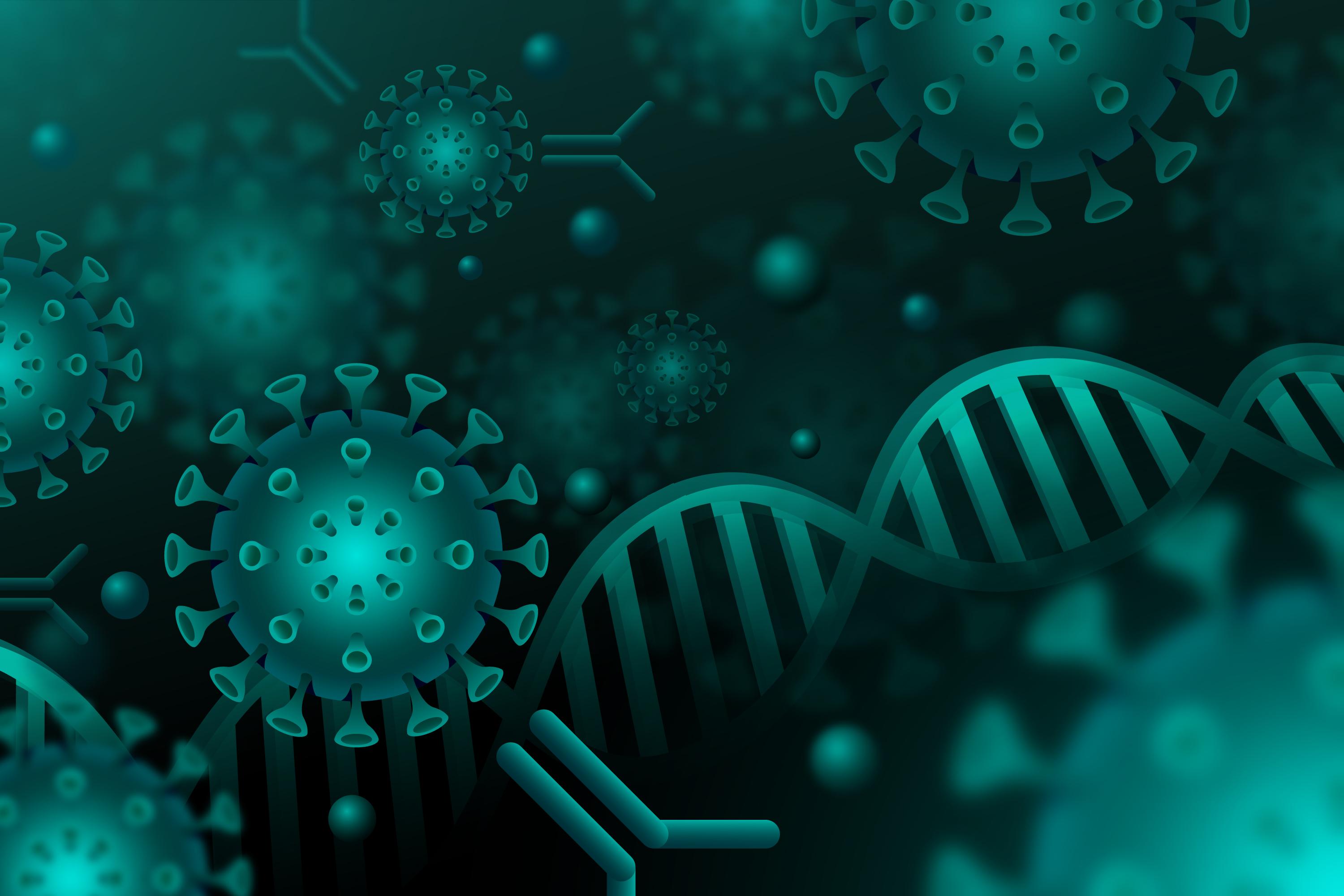

Academic Researcher
Journal of Basic and Clinical Sciences
Volume 01, Issue 02, 2024
An Official Journal of Fazaia Ruth Pfau Medical College, Air University
ISSN: 3008-0495 (Online)
ISSN: 3008-0487 (Print)
Epigenetic Biomarkers for Early Diagnosis in Cancer and Other Diseases
Saeeda Baig
Acad Res. 2025; 2(1): 1-4
Abstract
Epigenetics, though cannot directly modify DNA sequence, yet can alter regulation of gene expression playing a very crucial role in human health. These modifications occur at levels of DNA methylation, post-translational histone modifications, and gene expression, particularly altering 5-methylcytosine (5mC) and its derivative 5-hydroxymethylcytosine (5hmC), which are associated with transcriptional silencing and genome integrity [1, 2].
The major contributors in leading this disruption are lifestyle and environmental factors, causing developmental abnormalities and long-term health consequences.
Over the past decades, extensive studies have explored the effect of histone post-translational modifications (PTMs) on DNA-templated processes at the molecular level, enabled by the advent of genome-wide mapping techniques. The functional roles of histone PTMs in key processes—such as transcription, recombination, replication, DNA repair, and the modulation of genomic architecture—are slowly emerging across various biological systems, along with the identification of new types of PTMs and the methods by which they are deposited or removed.
Histone modifications, encompassing over 100 distinct types, are dynamically regulated by a wide array of enzymes that catalyze (writers) or remove (erasers) these chemical alterations. Their functional outcomes are mediated by specialized proteins (readers) that recognize specific modification patterns through dedicated binding domains. Notably, these enzymatic activities extend beyond histones to include non-histone substrates, thereby, broadening the regulatory scope of the epigenetic machinery.
1. Mechanisms of Epigenetic Modifications
DNA Methylation is the most studied epigenetic modification in cancer, often leading to the silencing of tumor suppressor genes, thereby promoting cancer progression [3].
DNA methylation is extensively integrated into the epigenetic network through crosstalk with histone modifications [4]. These changes can lead to aberrant gene expression profiles that contribute to cancer initiation and progression. Epigenetic modifications are often stable, allowing them to be passed to daughter cells, yet they can also be dynamic, responding to environmental and developmental signals. This dual nature makes them crucial in both the onset and progression of cancer, as well as potential targets for therapeutic intervention. Below are key aspects of epigenetics in cancer development:
(a) Methylation at CpG dinucleotides is primarily mediated by DNMT1, one of the DNA methyltransferases (DNMTs), leading to gene silencing through the methyl-binding proteins. Decitabine and 5-azacytidine, the DNMT inhibitors (DNMTis) as are incorporated in the DNA and block DNMT activity. Depletion of DNMTs results in demethylation of CpG dinucleotides and de-repression of gene expression.
(b) Histone deacetylases (HDACs) catalyze the removal of acetyl groups from histone tails, leading to chromatin condensation and suppression of gene activity. In contrast, HDAC inhibitors (HDACis) prevent this deacetylation, promoting histone acetylation and reactivation of gene expression.
(c) EZH2, the histone methyltransferase (HMT) represses the gene expression of target genes by inducing methylation of H3K27 in histone tails.
(d) LSD1, the histone demethyltransferase (HDM), controls gene expression through a dual effect: by decreasing methylation of activating gene expression of H3K9 and by decreasing H3K4methylation, which results in gene repression. Thus, histone modification that is changes in histone proteins can alter chromatin structure, affecting gene expression and contributing to cancer development [5]. Non-coding RNA: MicroRNAs and other non-coding RNAs can regulate gene expression post-transcriptionally, influencing cancer cell behavior [3, 6].
2. Epigenetic Biomarkers and Diagnostics
Epigenetic changes often precede histopathological changes, making them valuable as early biomarkers for cancer diagnosis and risk assessment (Verma, 2015). These Biomarkers derived from epigenomic information can aid in predicting disease progression and patient response to therapy (Verma, 2015) can serve as biomarkers for early cancer diagnosis and risk assessment, highlighting their significance in understanding cancer development and improving detection and monitoring strategies [7].
3. Therapeutic Implications
Epigenetic therapies, such as inhibitors targeting specific epigenetic modifications, offer potential for treating cancers by reversing aberrant epigenetic states [5]. The reversibility of epigenetic modifications provides a unique opportunity for developing targeted cancer therapies [5].
While epigenetics offers promising avenues for understanding and treating cancer, it is important to consider the complexity and interplay of genetic and epigenetic factors in cancer development. The field is rapidly evolving, with ongoing research needed to fully harness the potential of epigenetic therapies and diagnostics in clinical settings.
By modulating modifications of epigenetic such as DNA methylation and histone acetylation, researchers are developing new strategies to treat and prevent diseases, including using epigenetic drugs to target abnormal hallmarks in cancer cells and potentially even improving the efficacy of other therapies.
4. Epigenetic Therapies for Cancer
4.1.Targeting Epigenetic Alterations
• Aberrant epigenetic profiles often exhibited by cancer cells such as tumor suppressor genes hypermethylation or oncogenes hypomethylation are targeted by researchers. They have explored that by targeting these alterations with drugs like DNMT inhibitors and HDAC inhibitors normal gene expression can be restored.
• To Enhance Immune Response: The potential of the immune system's ability to recognize and attack cancer cells if enhanced by epigenetic therapies they can sensitize tumors to immune check-point therapy.
• To overcome Drug Resistance: the epigenetic therapies can be utilized to reverse modifications that contribute to drug resistance in cancer. These epigenetic changes, can make the tumor more receptive to conventional chemotherapy.
• To employ Combination Therapy: Combining chemotherapy or immunotherapy with epigenetic as well as other therapies, can generate a synergistic effect, improving tumor control and reducing side effects.
4.2. Epigenetic Therapies for Other Diseases
• Neuro-degenerative Disorders: neuro-degenerative such as Alzheimer's and Parkinson's targeted by Researchers to see the effect of epigenetic on the progression and development of these diseases. By targeting abnormal epigenetic modifications in the brain epigenetic therapies could potentially slow down or reverse disease progression.
• Metabolic and Cardiovascular Diseases: The development of metabolic and cardiovascular diseases can also be a contribution of epigenetic changes. New therapeutic epigenetic therapy may be a new way to either avert or suggest treatment for these conditions through gene therapy which can modulate its expression in relevant the tissue.
• Mental Disorders: Major depressive disorder (MDD), is among one of the several mental disorders are the result of epigenetics influence. These can be studied to develop markers targeting potential areas of gene abnormality in the brain to improve symptoms.
4.3. Advantages of Epigenetic Therapies
• Reliable and Reversible: The modifications due to epigenetic can be reversed, if treated appropriately with pharmacological interventions.
• Control of Gene Expression: Epigenetic therapies can directly influence gene expression at the pre-transcriptional level, correcting dysregulation at its source.
• Reduced Side Effects: Compared to conventional treatments like chemotherapy, epigenetic therapies can achieve significant tumor damage with fewer side effects.
4.4. Challenges and Future Directions
• Targeting Specific Epigenetic Modifications: Identifying the most effective targets for epigenetic therapies requires a deeper understanding of the specific epigenetic alterations in each disease.
• Delivery and Efficiency: Developing effective delivery systems for epigenetic drugs is crucial for achieving optimal therapeutic effects.
• Safety and Side Effects: While epigenetic therapies generally have fewer side effects than conventional treatments, it's important to monitor for potential adverse effects.
• Personalized Medicine: Developing epigenetic therapies that are tailored to individual patients based on their unique epigenetic profiles is a promising future direction.
4.5. Potential Epigenetic Drugs
• DNMT Inhibitors: Drugs like azacytidine and decitabine inhibit DNA methyltransferases, leading to DNA demethylation and reactivation of silenced genes.
• HDAC Inhibitors: Drugs like vorinostat and romidepsin inhibit histone deacetylases, increasing histone acetylation and promoting gene expression.
• IDH Inhibitors: Drugs like ivosidenib and enasidenib target mutated isocitrate dehydrogenase (IDH) genes in certain cancers.
• EZH2 Inhibitors: Drugs like tazlovir target the EZH2 histone methyltransferase, which is involved in many cancers.
Epigenetic therapies hold significant promise for treating a broad spectrum of diseases worldwide, including in developing countries. As our understanding of epigenetics advances, we can anticipate the emergence of more precise and effective treatments—potentially tailored to specific populations or ethnic groups based on their genetic profiles and environmental exposures.




